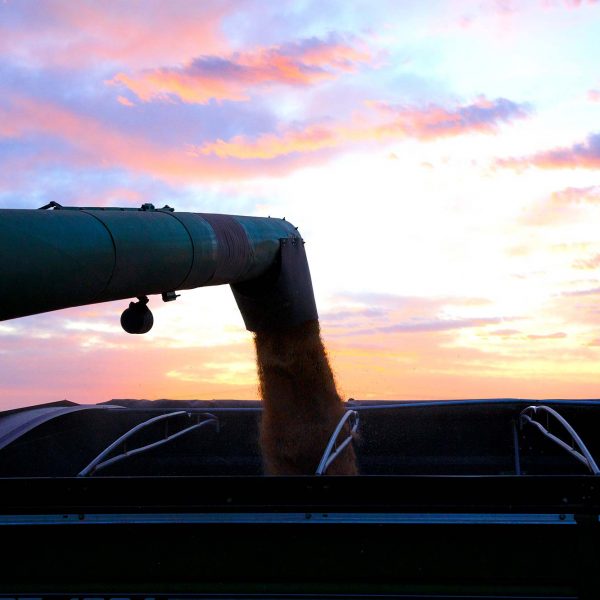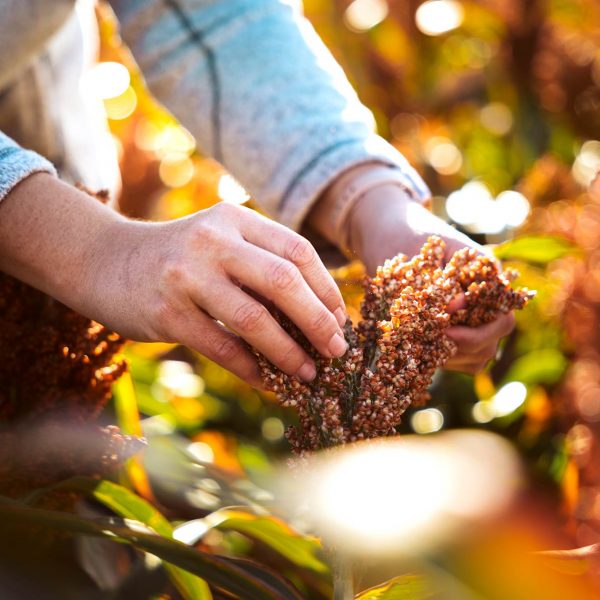
Igrowth/Imiflex Use in Sorghum
Igrowth/Imiflex Use in Sorghum
By Sorghum Checkoff Agronomy Director, Brent Bean, Ph.D.
Advanta’s igrowth sorghum was commercially available for widespread use in 2021. Most growers were pleased with grass control achieved with IMIFLEX herbicide, which is being sold by UPL. It is expected that plenty of igrowth seed will be available for the 2022 growing season.
Using IMIFLEX Herbicide
Tolerance of igrowth sorghum to IMIFLEX is very good and it is highly unlikely growers will see any crop injury following application. IMIFLEX can be used either PRE or POST emergence. Regardless of when it is applied, it should be used in a system with other herbicides.
When used PRE, apply with a group 15 herbicide (metolachlor, acetochlor, dimethenamid). This combination provides a second mode of action to better control weeds and grass as well as helping to prevent the development of resistant weeds. For additional broadleaf control, add atrazine and/or mesotrione if possible, based on soil type. The labeled rate for PRE IMIFLEX application is 9 oz per acre.
For POST application, the labeled rate is 6 oz and should be used with one of the recommended adjuvants. Similar to other POST emergence herbicides, grass and broadleaf weed size will matter. Control will be much better on small grass and broadleaves. Similar to other herbicides, delaying application past optimum application timing will result in significant decrease in control.
Although IMIFLEX is not a sulfonylurea herbicide, it is in the ALS mode-of-action group. As such, do not expect it to control weeds or grasses that have resistance to sulfonylurea herbicides.
Below are comments based on 3rd party igrowth/IMIFLEX trials sponsored by USCP in 2020 and 2021:
Grass Control
Control of green and giant foxtail has been very good with IMIFLEX applied either PRE or POST at multiple locations.
Crabgrass control, depending on the location, has been good to excellent when applied PRE. POST control of crabgrass has been good when applied to small crabgrass but less consistent on larger crabgrass.
Texas panicum (Colorado grass) has been a historically difficult grass to control. PRE application appears to be at least as good as that provided by group 15 herbicides. Since the label only allows for one application of IMIFLEX during the growing season, for this grass it may be best to apply a group 15 PRE and then apply IMIFLEX early POST to control escapes. This eliminates the variable of timely rain to activate the IMIFLEX if applied PRE.
Data on sandbur so far has been limited, but POST control with IMIFLEX was 88% in a trial at Akron, CO., which is very good for this grass.
Broadleaf Weed Control
Data on broadleaf weed control has been limited and mostly confined to Palmer amaranth. IMIFLEX will provide a different mode of action that should help in a weed control system with other herbicides. Results with IMIFLEX alone when applied POST have been mixed, but it is very important that Palmer amaranth be small at the time of POST application.
Crop Rotation and Integrated Weed Management
An important benefit of IMIFLEX is that while it has good soil activity, crop rotation should not be an issue with any major crops. Check the label for more details. In addition, adding a new class of herbicide into cropping systems that include sorghum will provide an advantage in weed resistance management programs.
As with all new crop protection products, check the label for the list of weeds and grasses, application timing, tank mix and crop rotation restrictions.
For more information visit the igrowth website Realize Your Sorghum Acres’ Potential.
There are important stewardship guidelines to prevent weed resistance from developing that should be closely followed with igrowth sorghum as well as the other herbicide technology sorghum systems. It is especially important to prevent resistance from developing in Johnsongrass and shattercane. Make sure all Johnsongrass and shattercane is controlled in and around igrowth sorghum fields during the time that the grain sorghum is flowering and shedding pollen. Sound stewardship practices will allow this technology to be effective for many years to come.
Please contact Sorghum Checkoff Agronomy Director, Brent Bean, Ph.D. with any questions.




